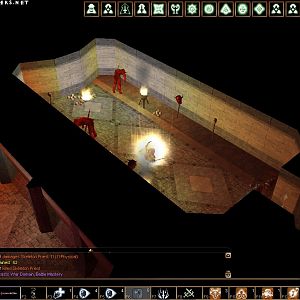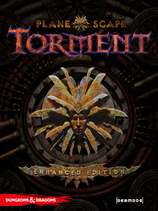-

- Forums
- Chatrooms
- Gallery
- Gameplay Videos
- Upload
- Articles
- Mod Reviews
- Shop SP: Games, Movies, Books

|
History
of the
Moonsea
|
The Moonsea has a long history as the border between the elven lands to the south and the darker, more sinister lands of the Ride and Thar, home of dragons and giant and ogre tribes in great multitudes. The deep sea was an excellent barrier to the raiders, as those tribes who sought invasion had to detour around and through the lands that would eventually hold Yulash, Zhentil Keep, and Hillsfar. The first true settlement in Moonsea was Northkeep, a shining citadel established as a beacon of civilization and a jumping-off point for merchants seeking trade with the dwarves of the North - including not only Tethyamar, but the clans of the Cold Lands - who traded their metalwork and craft for much-needed magic.
In the end, Northkeep was sunk beneath the icy waters of the Moonsea by the inhuman forces, and humankind suffered one of many setbacks in the region. So has been the nature of human habitation of this region since the beginning. Human settlements thrive for a few years, usually through sheer willpower and on the strength of a sharp sword, and then are overrun by goblins, orcs, dragons, beholders, or giants. Phlan has fallen and risen again. Yulash is a ruin where a decade ago there was a thriving town. Hulburg and Sulasspryn are empty hulks. Each of the cities of the Moonsea seems threatened with extinction in its turn, then is rebuilt. This cycle may be the reason that only the strongest and the most savage survive, even prosper, in the lands of the Moonsea.
The greatest cities - Hillsfar, Mulmaster, and the impenetrable Zhentil Keep - are all ruled by evil people who control their lands with iron grips. The lesser cities, Elventree, Phlan, and Thentia, may be less evil, but have a strong, independent, almost chaotic nature. In many ways the Moonsea is a frontier, with a frontier mentality.


